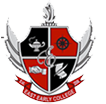
Phone:
Email:
Degrees and Certifications:
Advocacy Lesson
Advocacy Focus, East Early College High School
Date - Monday-Thursday May 6- 9
Essential Question: How much have you learned about female history?
Activity -(Writing/Discourse/Reading)
Task 1: Basic Understanding
- Facilitator or Student leader- Ask the following: What have you heard about feminism? What images come to mind? What do girls think feminism is? Students should write these responses down on their own paper.
- Facilitator or Student leader- should ask for student responses. Then, on the board or read the following definition: “Feminism is a set of beliefs that advocates equal rights for women.”
- Facilitator or Student Leader- should create 2 groups (teams). The teams will compete to answer the questions- they may use "internet" help or not- this is up to the person guiding the competition. Students must respond with True or False- if False, they must provide the correct answer.
-
Facts to share:
Women earn 80 cents for every $1.00 earned by their male counterparts.
Even college-educated women earn 5 percent less their first year out of school compared to their male peers. Ten years later, even if they keep working with those men, the women earn 12 percent less.
A record 40% of all households with children under the age of 18 include mothers who are either the sole or primary source of income for the family.
Approximately 1 in 5 female high school students report being physically and/or sexually abused by a dating partner.
76% of intimate partner physical violence victims are female.
Yes, domestic violence is the leading cause of injury to women (ages 15 to 44)- more than car accidents, muggings, and rapes combined.
On average, more women vote than men, yet only 24.4% of state legislators are women
Only 4 (plus the District of Columbia) out of 50 states have a female governor.
Women make up 19.4% of Congress.
- Announce the winner, and reflect on any new information the students discovered through these facts.
Task 2: The Waves of Feminism
- Reading: students should read the different waves of feminist.
- First Wave (the 1800s – 1920): Focused on overturning legal obstacles to vote and property rights for women.
- Second Wave (the 1960s – 1970s): Focused on legal and unofficial but cultural inequalities including, sexuality, family, the workplace (equal pay), and, perhaps most controversially, reproductive rights. Second Wave feminism was characterized by the fight to add the Equal Rights Amendment (ERA) to the United States Constitution, which required a vote by both chambers of Congress to pass it. The ERA would guarantee that equal rights could not be denied on account of gender. The ERA was never passed by Congress.
- Third Wave (the 1990s – present): Challenges or avoids second wave’s definitions of femininity, which often assumed a universal female identity and over-emphasized experiences of upper-middle-class white women. The third wave is more difficult to define because there is no overriding mission or set of conditions trying to be overturned.
- Reflection: students should respond to the following questions.
- “What do you think were the key events that happened in the first wave?”
- “What do you think were the key events that happened in the second wave?”
- “What do you think are the current events that are impacting the women’s movement?”
- Discussion: students should respond to the following- How did the feminist movement, the different waves improve equality for everyone, even men?
Task 3: What is a movement?
- Students should respond to the following questions on their own paper:
- What is a political movement?
- What do political movements aim to do?
- Why are they important in our history?
- What are some current political movements happening around us today? Some examples: police brutality, gun control, immigration rights, etc.
- How do you think political movements shift policy?
- Is there a difference between a protest and a movement? Are there similarities or differences?
- Students should then be given the opportunity to share-pair with a classmate.
- Then, as a whole class students should discuss their responses.
Task 4: Today's Issues
- Students should respond to the following questions on their own paper.
- What are modern day issues women face today?
- What type of movements do you see today?
- How are these events impacting our lives today?
- Why is important for men and women to work together towards gender equality?
- Students should then be given the opportunity to share-pair with a classmate.
- Finally, as a whole class, students should discuss their responses.
Reflection and Discourse -Closing Discuss: How can gender equality improve equality amongst racial groups?







